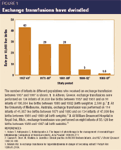A primer on phototherapy for the jaundiced newborn
Pediatricians need a keen understanding of the variables that influence how phototherapy lowers the bilirubin level and of how to deliver an optimal dose of light.
Phototherapy is the product of astute observation and serendipity. In 1956, Sister J. Ward, the nurse in charge of the premature baby unit at Rochford General Hospital in Essex, England, would take the "more delicate infants out into the [nearby] courtyard, sincerely convinced that the combination of fresh air and sunshine would do them much more good than the stuffy, overheated atmosphere of the incubator."1 One day she showed the pediatricians a jaundiced, premature infant who was pale yellow except for a triangle of skin much more yellow than the rest. A corner of the sheet had covered this part of the body, and Sister Ward pointed out how the rest of the infant had been "bleached" by the sun.
A few weeks later, a tube of blood in the nursery was, by chance, left exposed to sunlight for several hours. When the bilirubin was measured, it was 10 mg/dL lower than before! This confirmed the idea that visible light could affect serum bilirubin, and the concept of using light as a clinical tool was born.
Dr. R. J. Cremer, a resident in family practice at the hospital, put this concept to the test by exposing jaundiced premature infants to sunlight or blue fluorescent light. Both interventions lowered the bilirubin level.2 (Today, sunlight is not recommended by the American Academy of Pediatrics [AAP] for phototherapy in newborns,3 for reasons discussed later in this article.) In their landmark paper, Cremer and colleagues cautiously suggested that although phototherapy was unlikely to "prove a substitute for exchange transfusion in the erythroblastotic infant with active hemolysis ... the method may be turned to clinical advantage in controlling the level of serum bilirubin in cases of jaundice of prematurity."2

For many years, phototherapy was used primarily as a prophylactic intervention to prevent total serum bilirubin (TSB) from reaching a dangerous level. It is still used this way in the neonatal intensive care unit (NICU) and the well-baby nursery, but many babies who receive phototherapy have left the hospital and are readmitted for treatment of a TSB level of 20 mg/dL or higher. These infants need a therapeutic, rather than a prophylactic, dose of phototherapy-the objective being to get the bilirubin level down as soon as possible. Although most of the information needed to deliver this intensive form of phototherapy has long been available, many full-term infants nonetheless receive a dosage well below optimum range. A review of phototherapy is, therefore, in order.
Newsletter
Access practical, evidence-based guidance to support better care for our youngest patients. Join our email list for the latest clinical updates.